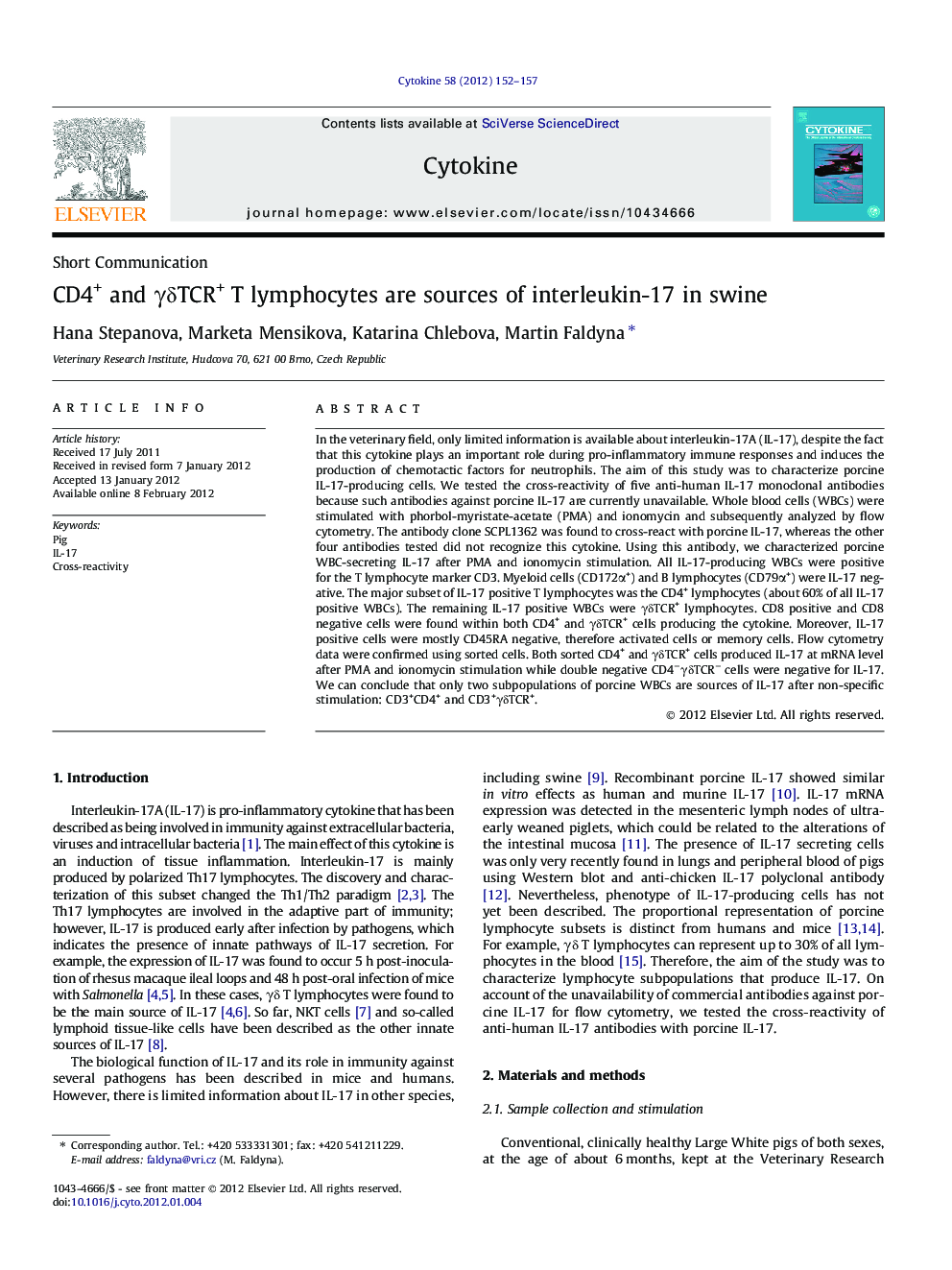| Article ID | Journal | Published Year | Pages | File Type |
|---|---|---|---|---|
| 5898092 | Cytokine | 2012 | 6 Pages |
In the veterinary field, only limited information is available about interleukin-17A (IL-17), despite the fact that this cytokine plays an important role during pro-inflammatory immune responses and induces the production of chemotactic factors for neutrophils. The aim of this study was to characterize porcine IL-17-producing cells. We tested the cross-reactivity of five anti-human IL-17 monoclonal antibodies because such antibodies against porcine IL-17 are currently unavailable. Whole blood cells (WBCs) were stimulated with phorbol-myristate-acetate (PMA) and ionomycin and subsequently analyzed by flow cytometry. The antibody clone SCPL1362 was found to cross-react with porcine IL-17, whereas the other four antibodies tested did not recognize this cytokine. Using this antibody, we characterized porcine WBC-secreting IL-17 after PMA and ionomycin stimulation. All IL-17-producing WBCs were positive for the T lymphocyte marker CD3. Myeloid cells (CD172α+) and B lymphocytes (CD79α+) were IL-17 negative. The major subset of IL-17 positive T lymphocytes was the CD4+ lymphocytes (about 60% of all IL-17 positive WBCs). The remaining IL-17 positive WBCs were γδTCR+ lymphocytes. CD8 positive and CD8 negative cells were found within both CD4+ and γδTCR+ cells producing the cytokine. Moreover, IL-17 positive cells were mostly CD45RA negative, therefore activated cells or memory cells. Flow cytometry data were confirmed using sorted cells. Both sorted CD4+ and γδTCR+ cells produced IL-17 at mRNA level after PMA and ionomycin stimulation while double negative CD4âγδTCRâ cells were negative for IL-17. We can conclude that only two subpopulations of porcine WBCs are sources of IL-17 after non-specific stimulation: CD3+CD4+ and CD3+γδTCR+.
⺠The antibody anti-human IL-17 clone SCPL1362 cross-reacts with porcine IL-17. ⺠Approximately 0.6% of lymphocytes produced IL-17 after stimulation with PMA/ionomycin. ⺠Sixty percent of porcine blood cells producing IL-17 after stimulation were CD3+CD4+. ⺠Remaining IL-17 producing cells were CD3+γδTCR+ lymphocytes.
